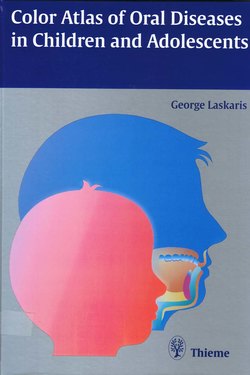Читать книгу Color Atlas of Oral Diseases in Children and Adolescents - George Laskaris - Страница 14
На сайте Литреса книга снята с продажи.
Оглавление5 Foreign-Body Deposits
Amalgam Tattoo
Definition
• Amalgam tattoo is a submucosal implantation of dental amalgam.
Etioiogy
• The most common ways that amalgam can be incorporated into the oral mucosa are: continuous contact between an amalgam filling and the oral soft tissues, and embedding of amalgam fragments into the oral tissues during dental filling or surgery.
Occurrence in children
• Relatively rare.
Localization
• The most common sites are the gingiva, alveolar mucosa, buccal mucosa, palate, and floor of the mouth.
Clinical features
• Clinically, amalgam tattoo presents as a black or dark-blue asymptomatic macule or plaque (Fig. 5.1). The borders of the lesion may be well defined or irregular, and the size varies from a few millimeters to several centimeters.
• Adjacent teeth usually have amalgam restorations.
• The diagnosis is usually based on the clinical features.
Laboratory findings
• Amalgam fragments may be visible on the radiograph as a densely radiopaque lesion.
• Microscopically scattered dark-brown granules are seen in the connective tissue.
Differential diagnosis
• Pigmentation from other metals
• Melanocytic nevus
• Freckle and ephelis
• Malignant melanoma
• Pigmentation due to drugs
Treatment
• Treatment is not required.
• Excisional biopsy is required only for diagnostic purposes.
Other Foreign-Body Implantations
Definition
• Incorporation of foreign body materials into the oral mucosa, such as silver, pencil graphite, metal dust, fish bone, wood pieces and other solid material.
Occurrence in children
• Common.
Localization
• Gingiva, alveolar mucosa, tongue, buccal mucosa, palate, lips.
Clinical features
• Clinically, the lesions present as an asymptomatic, grayish or melanotic macule or plaque, or even as an inflammatory swelling (Figs. 5.2, 5.3).
• The diagnosis is based on the history, clinical features, and occasionally on histopathological features.
Laboratory tests
• Radiographic examination.
• Biopsy and histopathological examination.
Differential diagnosis
• Amalgam tattoo
• Melanocytic nevus
• Pyogenic granuloma
• Soft-tissue abscess
Treatment
• Surgical excision of the foreign body.
Fig. 5.1 Amalgam tattoo on the palatal alveolar mucosa
Fig. 5.2 Fish bone implantation on the lateral border of the tongue, resulting in an inflammatory swelling
Fig. 5.3 Pencil graphite implantation into the dentogingival sulcus of the leteral incisor
Materia Alba of the Gingiva
Definition
• Materia alba is the result of necrotic epithelial cells, bacteria, and accumulation of food debris on the oral mucosa.
Etiology
• It is usually seen in patients with poor oral hygiene who neglect toothbrushing, or in cases in which painful oral lesions make oral hygiene difficult.
Occurrence in children
• Common.
Localization
• Dentogingival margins, attached gingiva, alveolar vestibular mucosa.
Clinical features
• Clinically, a white or yellow-whitish plaque is seen, which can be easily removed with slight rubbing, leaving an erythematous surface (Fig. 5.4).
• The plaque is painless, and is usually accompanied by halitosis.
• The diagnosis is based on the clinical features.
Differential diagnosis
• Candidiasis
• Leukoplakia
• Lichen planus
• Chemical burn
Treatment
• Good oral hygiene.
Fig. 5.4 Materia alba on the attached lower gingiva
